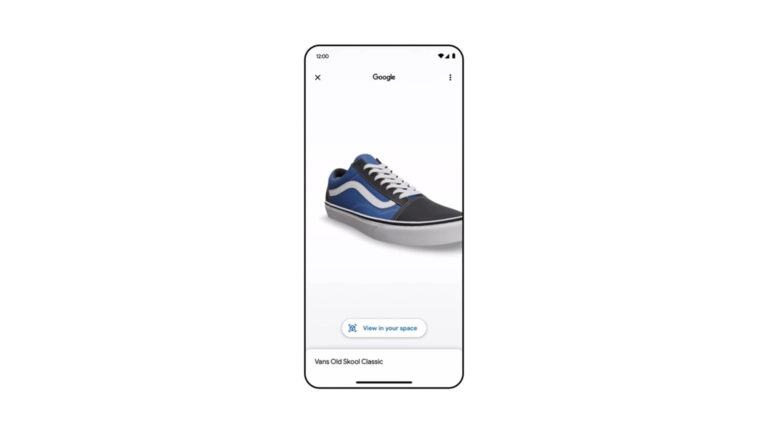
Remember when eCommerce was the scrappy new frontier? A “let’s try it” experiment next to glossy retail showrooms? Fast forward, and online has become the default. Yet in many ways, it’s still catching up to the richness of the in-person experience.
Enter AR shopping.
What started as an eye-catching gimmick (hello, virtual sunglasses and Snapchat puppy filters) is now a cornerstone of the next digital transformation wave. Think of it as the shift from read to read/write in web history, or static product pages to dynamic, interactive environments. Augmented reality (AR) is evolving from an innovation to an expectation.
We see this firsthand every day: the brands leaning into AR and 3D commerce are pulling ahead. Not because it’s flashy. Because it works; for buyers and business outcomes alike.
So what are the biggest trends and drivers for AR shopping? Here are four that every forward-looking brand leader needs on their radar.
1. AR Shopping Is Now Table Stakes
A few years ago, offering AR product previews felt cutting-edge. Today, it’s becoming a baseline expectation. A 2023 Deloitte report showed that 71% of consumers say they’d shop more often with brands offering AR, and Shopify merchants using 3D/AR see up to 250% higher conversion rates compared to those with static images.
This shift is especially visible in high-consideration categories like:
- Home appliances and furniture, where fit and finish are paramount
- Sporting goods and tactical gear, where functionality and configuration matter
- Luxury products, where shoppers want to experience before they commit
- Brands like Wayfair, IKEA, and Whirlpool are setting the bar. As AR moves from “nice to have” to “need to have,” lagging behind risks looking outdated.
Takeaway: AR is table stakes. Treating it as a short-term gimmick will only leave your brand behind.
2. From One-Size-Fits-All to Personalized
The future of AR is not just about visualizing a product, it’s about visualizing your product. We’re witnessing the rapid rise of real-time product configuration in AR, where shoppers can:
- Choose materials, colors, and finishes
- Preview custom engravings or accessories
- See exact dimensions in their space via mobile AR
- This isn’t limited to consumer goods. B2B sectors are embracing personalized AR as well.
- Allowing, for instance, a contractor to configure a kitchen appliance setup and “drop” it into a client’s renovation plan via AR.
Dopple specializes in these interactive 3D product configurators that drive deeper engagement, better buyer confidence, and smarter operations. Preferences captured in real time inform demand planning and inventory decisions.
Takeaway: Personalization is the new frontier of AR. Brands must empower shoppers to interact, not just view.
3. AR + AI = Situational Commerce
As AR becomes more embedded in shopping, it’s converging with another force: AI-powered intelligence.
Together, they’re powering a new kind of buying journey we call Situational Commerce. The customer experience isn’t linear or static, it’s responsive to context.
Imagine a shopper browsing tactical boots. AI suggests weather-compatible styles based on their region. AR shows how they’ll look with the gear already in their closet. The experience becomes fluid, helpful, and contextual. All tailored to their real-world needs.
This shift changes how brands should think about product content, merchandising, and digital UX. It’s no longer just about listing SKUs. It’s about creating adaptive interfaces that respond to each customer’s moment, behavior, and intention.
Takeaway: Situational Commerce is a game-changer. AR and AI are a dynamic duo shaping the future of discovery and decision-making.
4. Brands Are Investing in Infrastructure to Scale AR
Perhaps the most telling trend? The internal shift we’re seeing across ecommerce orgs. Where AR used to be a campaign one-off, it’s now becoming a core pillar in digital transformation roadmaps. We’re seeing:
- Product and marketing teams collaborating earlier to design with AR in mind
- Platforms investing in native AR support, from Shopify to BigCommerce
- Centralized 3D asset management as a new capability for brand operations
- This maturity mirrors what we saw when eCommerce first went mainstream. Brands needed new teams, tools, and processes to support DTC. Today, the same is happening for immersive commerce, and those who act now will reap the rewards of being early but scalable.
Takeaway: AR at scale requires more than tech. It requires mindset and infrastructure. It’s not a feature. It’s a format.
Conclusion: Not a Fad, a Format Shift.
AR is not a sideshow to traditional eCommerce. It’s a new mode of interaction, a way for brands to show up in the phygital world customers now inhabit. And like every format shift before it—print to digital, desktop to mobile, linear to personalized—it rewards those who adapt early. Not with shiny metrics, but with lasting customer relevance.
 Dopple is a startup that supports AR shopping through its 3D Configurator, 3D Visualizer, and other tools. A version of this post first appeared on the Dopple Blog.
Dopple is a startup that supports AR shopping through its 3D Configurator, 3D Visualizer, and other tools. A version of this post first appeared on the Dopple Blog.

